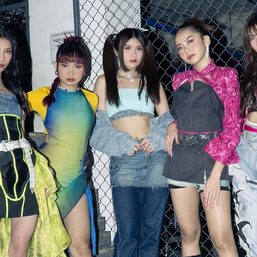SUMMARY
This is AI generated summarization, which may have errors. For context, always refer to the full article.
![[OPINION] Manila: Black Panther to the rescue? If only.](https://www.rappler.com/tachyon/r3-assets/612F469A6EA84F6BAE882D2B94A4B421/img/A16A2973433E48AB84387BF6B4863E37/tl-manila--black-panther-to-the-rescue-if-only-june-21-2018.jpg)

Los Angeles, USA – This May at the annual Milken Institute Global Conference in Los Angeles, the theme could well have been tailor-made for Metro Manila. Our topic: “Navigating a world in transition”.
As more and more Filipinos move to Manila and inequality grows between the rich and the poor, the challenges of all too many of Southeast Asia urban areas are front and center in the Philippine capital city.
But intriguingly, from Hollywood – just a few miles from our conference site – came a blockbuster film that might also offer up an unintentional message for not just Filipino but all Southeast Asian urban leaders.
Black Panther, Marvel’s early-2018 entry in its cinematic universe, has grossed more than US$1.3 billion since its release, including some $50 million in Southeast Asia. The Philippines accounted for nearly $10 million of that total. Those box office numbers make Black Panther the highest ever grossing film based on a single superhero.
But more than setting a new standard for comic-book inspired projects, the film, set in the Marvel Universe, has caught the attention of urbanists in its presentation of city life. Indeed, Manila’s property developers and urban planners should take note of how urban life in the film is depicted.
A good part of the film takes place in Birnin Zana, the capital of Wakanda, a fictional African nation protected from outside influences by the Black Panther, whose real identity is T’Challa, the king of the technologically advanced, but isolationist country.
What is striking about Wakandan citylife is how different it is from what we have become accustomed to see in movies offering a view of modernity, as well as in our own travels through the rapidly growing urban areas of much of Southeast Asia.
Architectural Digest’s Marc Malkin writes that rather than seeing the ubiquitous glass-and-steel towers and sterile street life that we have come to expect in the cities of tomorrow, we are shown in the film Black Panther a colorful cityscape infused with African textures, designs, and colors, organized to emphasize human interaction.
All this contributes to the fictional capital’s unique, memorable “vibe” – one where skyscrapers rise from vibrant communities below.
Sadly, the same cannot be always said about the capital cities of ASEAN member-states.
What is clear in a journey through the region’s megacities is that the scale and direction of urbanization has led too often to reduced livability and burgeoning inequality between those who can and those who cannot afford the best that a city has to offer.
This challenge is likely to only grow, as more people move from rural to urban areas and inequality increases across the region.
A recent United Nations Department of Economic and Social Affairs’ annual World Urbanization Prospects report projects that many of Southeast Asia’s cities will experience double-digit growth between 2015 and 2025.
Manila is projected to grow 17.4%, from 12.9 to 15.2 million people; Jakarta, 22%, from 10.3 to 12.6 million; and Bangkok, Thailand, 11.2%, from 9.3 to 11 million.
This rampant urbanization has come at the expense of the region’s architectural richness and cultural fabric.
Street vendors have been banished in parts of some cities as urban planners seek to impose a new, cleaner, but perhaps more sterile, vision of the modern city. And, as street life has disappeared, the longstanding, vibrant communities that made these cities unique have also come under threat, if not vanished.
What replaces many a cityscape is a generic blandness. This “mallification”, punctuated by the existence of a generic mega mall that is transplanted from country to country, too often draws little or no design influence from a country’s legacy. This is all too sadly evident even in a region that is home to many Unesco world heritage sites, including several in the Philippines. These sites draw thousands of visitors each year for inspiration, but seem to have been relegated to the past.
This harsh division of past and present has not always existed in the region. One need only to look to Cambodia’s “Golden Age” of the 1960s as an example, when Cambodian architect Vann Molyvann fused building features of the Angkor Empire with modern design elements to help launch the “New Khmer Architecture” movement. His works were hailed for its synthesis of style and tradition.
By looking back, Molyvann’s forward-looking designs remained authentically Khmer. Sadly, many of his works have succumbed to Phnom Penh’s breakneck development and to a vision of urbanization that seemingly emphasizes size over authenticity.
It is this authenticity, however, that is among the critical ingredients that go into designing a healthy city. That’s according to The Philips Center for Health and Well-being, a Netherlands-based think tank focused on improving the lives of people around the world.
Rather than ignore its history, urban planners and developers should embrace a city’s heritage, culture and environment to create a unique sense of place and identity. This uniqueness, of seeing something we have never seen before and that exists nowhere else, is what we also react to when we see the vibrant streets of Wakanda on screen.
Spoiler alert! As the movie Black Panther draws to a close, Wakanda’s leader, T’Challa, informs the United Nations of his decision to reveal the true state of his country’s advancements and development. The scene concludes with a foreign official responding by asking what Wakanda has to offer the world.
Here is one clear answer. Wakanda shows that there need not be a default setting for what urbanization looks and feels like. This need not simply be Hollywood make-believe. Cities everywhere will continue to grow, but they can also do so by embracing their rich pasts while building a vibrant, unique and inclusive future.
Our hope is that Southeast Asia, including the Philippines, can show the way. We need not wait for Black Panther to build a better Manila. – Rappler.com
Curtis S. Chin, a former US ambassador to the Asian Development Bank, is managing director of advisory firm RiverPeak Group, LLC. Jose B. Collazo, a Southeast Asia analyst, is an associate at RiverPeak Group, LLC. Follow them on Twitter at @curtisschin and @josebcollazo.
PHOTOS/IMAGES: Black Panther photo from Facebook page. Makati Skyline image from Shutterstock. General view of traffic as Manila’s financial district is seen in the background – photo by Noel Celis/AFP.
Add a comment
How does this make you feel?





There are no comments yet. Add your comment to start the conversation.